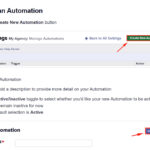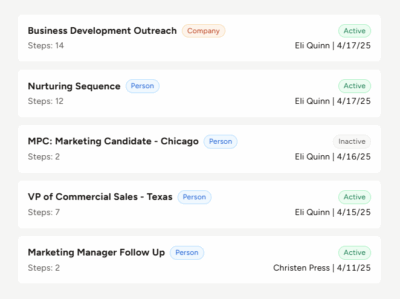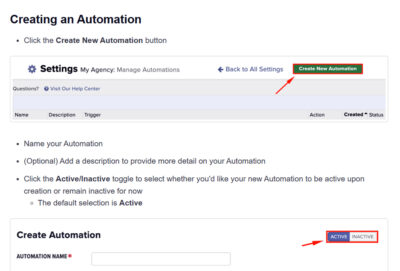Onboarding is the process by which new employees are integrated into an organization and provided with the necessary resources, training, and support to become productive members of the team. The goal of onboarding is to ensure that new employees have a positive experience and feel prepared to perform their job duties effectively.
Onboarding typically begins before a new employee’s first day on the job and can last several months, depending on the complexity of the job and the organization’s culture and practices. The process typically includes several steps, such as completing paperwork, setting up technology and other necessary equipment, meeting with managers and team members, and receiving training and orientation to the organization’s policies and procedures.
Effective onboarding programs also provide new employees with a clear understanding of their job responsibilities, performance expectations, and opportunities for growth and development. In this blog post from Top Echelon Recruiting Software, we’ll show how proper onboarding can help new employees feel more engaged and motivated, leading to increased job satisfaction and retention.
The Importance of Onboarding
Onboarding is a critical process for organizations of all sizes and types. It can help ensure that new employees are integrated into the organization effectively and feel supported and valued from the beginning of their employment. Effective onboarding can also help organizations retain top talent and create a positive and productive work environment for all team members.
We shall address the importance of onboarding and how to make a great first impression with new hires, starting with the benefits of a stellar onboarding process.
Improved Employee Retention
Effective onboarding can lead to improved employee retention by providing new employees with a positive and engaging experience that helps them feel valued and supported. When employees feel that their contributions are appreciated and that they have the necessary tools and resources to perform their job effectively, they are more likely to remain with the organization over the long term.
One of the key benefits of effective onboarding is that it can help new employees become productive members of the team more quickly. By providing new employees with training, orientation, and support, they can learn the ropes of their new role and begin contributing to the organization more quickly. This can help new employees feel more engaged and valued, leading to increased job satisfaction and retention.
Effective onboarding can also help new employees develop a sense of connection and belonging to the organization. By introducing new employees to their team members and providing opportunities for socialization and networking, they can begin to build relationships and feel like they are part of the team. This can lead to increased engagement and retention, as employees are more likely to remain with organizations where they feel connected and valued.
Finally, effective onboarding can help new employees understand their career growth opportunities within the organization. By providing information on career paths, performance expectations, and growth opportunities, organizations can demonstrate a commitment to employee development and support. This can help new employees feel motivated and engaged, leading to increased retention over the long term.
Effective onboarding can lead to improved employee retention by providing new employees with a positive and engaging experience that helps them feel valued, supported, and connected to the organization. By providing training, orientation, support, socialization, and career development opportunities, organizations can help new employees become productive members of the team and build a strong foundation for long-term success.
Faster Time to Productivity
Effective onboarding can lead to a faster time to productivity for new employees, which is a key benefit for both the employee and the company. Time to productivity refers to the length of time it takes for a new employee to become fully functional and contribute to the company’s goals and objectives. The faster an employee can become productive, the sooner they can start contributing to the success of the company.
Effective onboarding can help new employees to become productive more quickly by providing them with the knowledge, skills, and tools they need to succeed in their role. This can include training on company processes and systems, mentorship programs, and opportunities to shadow more experienced colleagues. By providing these resources and support, new employees can become familiar with their role and responsibilities more quickly, and start contributing to the company’s goals sooner.
In addition to benefiting the company, faster time to productivity can also benefit the new employee. Starting a new job can be stressful, and a slow time to productivity can add to that stress. By providing effective onboarding, new employees can feel more confident and supported, which can lead to a more positive experience overall.
Faster time to productivity is a key benefit of effective onboarding. By providing new employees with the resources and support they need to succeed, companies can help to ensure that new employees become productive more quickly, which benefits both the employee and the company.
Improved Job Satisfaction
Effective onboarding can lead to improved job satisfaction by providing new employees with the necessary support, resources, and training to perform their job duties effectively. When employees feel that they have the necessary tools and resources to do their job well, they are more likely to feel satisfied with their work and their organization.
One of the key benefits of effective onboarding is that it can help new employees become acclimated to their new role more quickly. By providing training and orientation, new employees can learn the necessary skills and knowledge to perform their job effectively. This can help new employees feel more confident in their abilities and more satisfied with their work.
Effective onboarding can also help new employees understand the expectations and goals of their new role. By providing clear communication and feedback, new employees can better understand what is expected of them and how their contributions fit into the larger picture. This can help employees feel more engaged and satisfied with their work, as they understand how their efforts are making a difference.
Finally, effective onboarding can help new employees develop a sense of connection and belonging to the organization. By introducing new employees to their team members and providing opportunities for socialization and networking, they can begin to build relationships and feel like they are part of the team. This can lead to increased job satisfaction, as employees are more likely to feel supported and valued by their colleagues.
Effective onboarding can lead to improved job satisfaction by providing new employees with the necessary support, resources, and training to perform their job duties effectively, understand expectations and goals, and develop a sense of connection and belonging to the organization. By investing in effective onboarding programs, organizations can improve the job satisfaction of their new employees, leading to increased productivity, retention, and overall success.
Better Alignment with Organizational Culture and Values
One of the key benefits of effective onboarding is better alignment with organizational culture and values. Organizational culture refers to the shared values, beliefs, attitudes, and behaviors that define the way things are done in a company. Effective onboarding can help to ensure that new employees understand and align with these cultural norms, which is essential for long-term success in the role.
By introducing new employees to the company’s values and culture early on in the onboarding process, companies can help to ensure that new employees understand and align with these cultural norms. This can include information about the company’s mission, vision, and values, as well as expectations around behavior and communication. By providing this information early on, new employees can begin to integrate into the company’s culture more quickly and effectively.
Better alignment with organizational culture and values can benefit both the new employee and the company. For the employee, better alignment can lead to a greater sense of belonging and job satisfaction. For the company, better alignment can lead to higher levels of employee engagement and retention, as well as improved overall performance.
Better alignment with organizational culture and values is a key benefit of effective onboarding. By introducing new employees to the company’s values and culture early on in the onboarding process, companies can help to ensure that new employees understand and align with these cultural norms, which is essential for long-term success in the role.
Improved Customer Satisfaction
Effective onboarding can lead to improved customer satisfaction by ensuring that new employees are properly trained and equipped to provide high-quality service and support to customers. When employees feel confident in their abilities and have a clear understanding of their role and responsibilities, they are better positioned to provide excellent customer service.
One of the key benefits of effective onboarding is that it can help new employees understand the organization’s culture and values. By providing information on the company’s mission, values, and goals, new employees can better understand the expectations for customer service and support. This can help them provide more personalized and effective service to customers, leading to increased customer satisfaction.
Effective onboarding can also provide new employees with the necessary skills and knowledge to effectively handle customer inquiries and resolve issues. By providing training on customer service best practices, new employees can develop the necessary communication and problem-solving skills to meet the needs of customers. This can lead to increased customer satisfaction and loyalty, as customers are more likely to return to organizations that provide exceptional service and support.
Finally, effective onboarding can help new employees understand the importance of customer satisfaction to the organization’s success. By highlighting the role that customers play in the organization’s growth and success, new employees can better appreciate the importance of providing high-quality service and support. This can lead to a culture of customer-centricity, where employees are more focused on meeting the needs of customers and improving their overall experience.
Effective onboarding can lead to improved customer satisfaction by ensuring that new employees are properly trained and equipped to provide high-quality service and support. By providing information on the organization’s culture and values, training on customer service best practices, and highlighting the importance of customer satisfaction, organizations can create a customer-centric culture that leads to increased customer loyalty and overall success.
How to Make a Great First Impression with New Hires
So . . . how can you reap all of the benefits associated with a stellar onboarding process? By following the list of onboarding best practices that we’ve prepared for you below!
Communicate Early and Often
Communicating early and often with new hires is essential to making a great first impression and setting the stage for a positive onboarding experience. From the moment a new hire accepts a job offer, clear communication is critical to building trust, setting expectations, and ensuring a smooth transition into the organization.
One of the key benefits of communicating early and often is that it can help new hires feel valued and supported from the outset. By providing regular updates and information about the onboarding process, new hires can feel more connected to the organization and more confident in their decision to join. This can help create a positive first impression and set the stage for a successful onboarding experience.
Effective communication can also help new hires better understand their role and responsibilities, as well as the organization’s expectations and goals. By providing clear information on job duties, performance expectations, and organizational culture, new hires can develop a clear sense of their role within the organization and how they can contribute to its success.
Finally, early and frequent communication can help identify and address any potential concerns or issues early on. By providing new hires with a point of contact and a forum to ask questions or raise concerns, organizations can proactively address any issues and ensure a smooth transition into the organization.
Provide a Warm Welcome
Providing a warm welcome to new hires is essential for making a great first impression and setting the tone for a positive onboarding experience. A warm welcome can help to ease any nerves or anxieties that new employees may have and make them feel more comfortable and excited about their new role.
There are several ways that companies can provide a warm welcome to new hires. One approach is to create a personalized welcome message or package. This can include a personalized note from their new manager, a company t-shirt, or other branded items that can help to make new employees feel like they are part of the team from day one.
Another way to provide a warm welcome is to schedule an informal meet and greet with the new hire’s team. This can help new employees to get to know their colleagues and feel more comfortable in their new environment.
Additionally, it’s important to ensure that the new hire’s workspace is set up and ready to go on their first day. This can include providing the necessary equipment and supplies, such as a computer, phone, and office supplies.
Provide Clear Expectations
Providing clear expectations to new hires is an essential component of making a great first impression and setting the stage for a positive onboarding experience. When new hires have a clear understanding of what is expected of them, they can focus on meeting those expectations and contributing to the organization’s success.
One of the key benefits of providing clear expectations is that it can help new hires feel more confident and prepared for their role within the organization. By providing information on job duties, performance expectations, and organizational culture, new hires can develop a clear sense of their role within the organization and how they can contribute to its success.
Clear expectations can also help new hires feel more connected to the organization and its goals. By providing information on the organization’s mission, values, and goals, new hires can understand how their role fits into the larger picture and feel more invested in the organization’s success.
Finally, clear expectations can help set a positive tone for the entire onboarding experience. When new hires feel supported and well-informed, they are more likely to have a positive impression of the organization and be motivated to contribute to its success.
Provide Training and Development Opportunities
Providing training and development opportunities is another way to make a great first impression with new hires. By investing in their growth and development from the outset, companies can demonstrate their commitment to their employees and help new hires to feel supported and valued.
One approach to providing training and development opportunities is to create a comprehensive onboarding program that includes training on company processes and systems, as well as job-specific skills and knowledge. This can include e-learning modules, shadowing opportunities, and one-on-one coaching sessions.
In addition to onboarding training, companies can also offer ongoing development opportunities to help new employees grow and progress in their careers. This can include access to professional development courses, mentorship programs, and leadership training programs.
By providing training and development opportunities to new hires, companies can also help to improve employee retention and engagement. Employees who feel that their company is invested in their growth and development are more likely to be satisfied with their jobs and stay with the company for the long term.
Provide Ongoing Support
Providing onboarding support is an essential component of making a great first impression with new hires and setting the stage for a positive onboarding experience. When new hires feel supported and well-informed during the onboarding process, they are more likely to have a positive impression of the organization and be motivated to contribute to its success.
One of the key benefits of providing onboarding support is that it can help new hires feel more confident and prepared for their role within the organization. By providing access to training, resources, and support networks, new hires can quickly develop the skills and knowledge they need to be successful in their new position.
Onboarding support can also help new hires feel more connected to the organization and its culture. By providing opportunities to meet with colleagues, learn about the organization’s history and values, and participate in team-building activities, new hires can develop a sense of belonging and become invested in the organization’s success.
Finally, providing onboarding support can help ensure a smooth transition for new hires and minimize turnover. By addressing any concerns or issues early on and providing ongoing support and feedback, organizations can help new hires feel valued and supported, reducing the likelihood of turnover and promoting long-term retention.
Onboarding and your ATS
Onboarding is a critical process that sets the tone for an employee’s experience with a company. It’s the process of integrating new employees into the workplace and providing them with the tools, information, and support they need to be successful in their role. One important tool that can be used to support the onboarding process is an Applicant Tracking System (ATS).
An ATS is a software platform that streamlines the recruitment and hiring process. It allows companies to manage job postings, track applicant information, and automate many of the steps in the hiring process. When integrated with an onboarding process, an ATS can help to ensure that new employees have a smooth transition into their role.
An ATS can be used to automate many of the administrative tasks involved in onboarding, such as sending offer letters, collecting employee information, and tracking completion of required forms and training. This can save time and reduce errors, allowing HR teams to focus on more strategic aspects of the onboarding process.
An ATS can also help to provide a more personalized onboarding experience for new employees. For example, an ATS can be used to send targeted welcome messages, personalized training materials, and customized onboarding checklists based on the employee’s role and department.
Ultimately, an ATS can be a valuable tool to support the onboarding process. It can help to streamline administrative tasks, provide a personalized onboarding experience, and ensure that new employees have a smooth transition into their role. By leveraging the capabilities of an ATS, companies can create a positive onboarding experience that sets the tone for a successful employee-employer relationship.









